Christopher Plummer Says Ill Never Work With Terrence Malick Again Heres Why!
The Philosophical Filmmaking Process of Terrence Malick
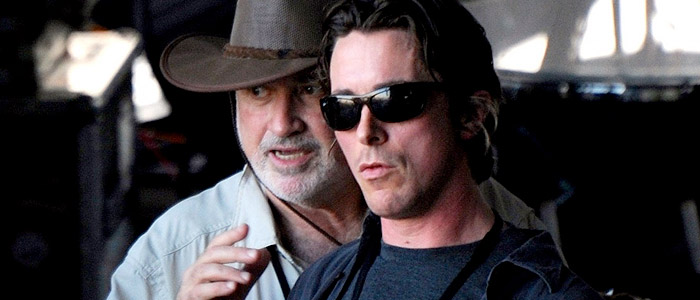
Much has been made of the philosophical themes that run throughout the catechism of Terrence Malick'due south films. Although I will briefly hash out some of these themes, my chief focus volition not be on the content of Malick's work, but rather, on his unique filmmaking process and the evolution of this procedure through a series of creative leaps of faith. I volition trace the flowering of this procedure from his innovative magic hr cinematography in Days of Sky (1978), to his mail-production discovery of narrative in The Sparse Red Line (1998), to his radical subjectivity and utilize of camera as graphic symbol in The New World (2005) and Tree of Life (2011), to his complete abandonment of script and story in To the Wonder (2012), Knight of Cups (2015), and Vocal to Song (2017.) I will discuss Malick'south unusual (and perhaps exploitive) use of actors and not-actors. And finally, I will argue that although Malick has shared credit with many of the leading actors in Hollywood, with a crew that includes several talented movie editors, and with the near historic cinematographer in recent history, Emmanuel Lubezki, Malick views his films first and foremost as a collaboration between himself and God.
Winner of two Palme d'Or awards and nominated for three Academy Awards, auteur filmmaker, Terrence Malick, is i of the nearly distinguished American filmmakers of the by 50 years. He has made exquisite, haunting, enigmatic, and sometimes frustratingly impenetrable films and given united states of america dazzling and awe-inspiring images that have influenced a various array of filmmakers like Christopher Nolan, Alejandro Iňárritu, Zack Snyder, and David Gordon Green.
But Malick didn't set out to be a filmmaker. He began his career as an bookish philosopher. Following his undergraduate work at Harvard, Malick pursued his doctoral degree at Oxford University equally a Rhodes Scholar, where he studied Kierkegaard, Heidegger, and Wittgenstein. Merely after a bitter dispute with his thesis advisor, Gilbert Ryle, Malick left Oxford without a doctorate.
Malick connected to contribute to philosophy as a lecturer at MIT. He too published a translation of Heidegger'due south The Essence of Reasons in 1969 (Northwestern University Printing), only that same year, he earned his MFA from the AFI Conservatory, and turned his attention to the fine art of filmmaking.
Badlands, Days of Sky and Magic Hour Cinematography
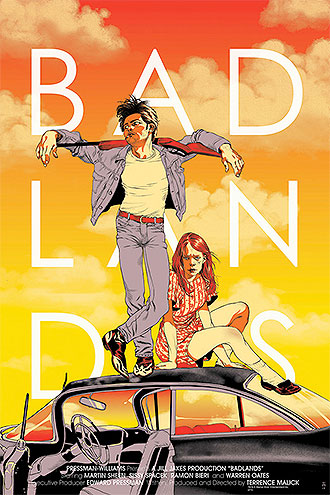
Terrence Malick's 1978 pic, Days of Heaven, is most often credited with the emanation of "magic 60 minutes" cinematography. But the seeds of this fruit can be seen in his seminal 1973 film, Badlands. In fact, although much of that moving-picture show appears sun-bleached or harsh, the most famous shot of the moving picture, in which Martin Sheen stands Christ-like, burglarize behind his head, is a epitome magic hour shot. The fact that the effect was accomplished accidentally or at least spontaneously was, I believe, critical to the genesis of Malick's method too as to his collaboration with the Divine.
In photography, magic hour refers to the few minutes from just before sunrise to just after and from just before sunset to just after. More than precisely, it occurs when the sun is approximately 4-viii degrees below the horizon. In these few minutes of twilight, the low-cal is soft, scattered, and diffused. Shadows are long, the horizon takes on an ethereal glow, and when backlit, faces are frequently haloed with aureate light.
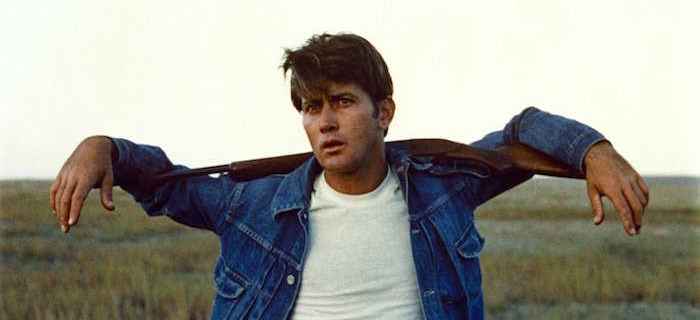
There is little prove to suggest that this influential shot was deliberately realized. The production of Badlands was troubled. Working quickly on a $300,000 budget with a not-union crew with which he oftentimes clashed, Malick shot from morning to night out of necessity. The pic, inspired by the Starkweather murder spree of 1957-8, is Malick's most traditional and accessible and was shot in a relatively traditional style, although Sissy Spacek recounts that sometimes, Malick would see a cluster of clouds that he liked and they would run towards it to shoot before the light changed. 1
What Malick discovered by blow, epiphany, or revelation, he soon forged into an art. For his side by side film, Days of Heaven, he replaced cinematographer, Tak Fujimoto (and two others), with lighting specialist Nestor Almendros, who had worked with new wave European directors like Éric Rohmer and François Truffaut. (Almendros would win the Oscar for All-time Cinematography for Days of Heaven.) The film was shot in southern Alberta in Baronial, where the magic hour lasted near 40 minutes rather than about twelve. It is often reported that Days of Sky was shot entirely during magic hour using just available low-cal, but in an interview, Almendros clarifies. He says that the daylight hours were spent shooting interiors and in those scenes, in the barn or in the farmer's house, some artificial low-cal was necessary to preserve the stability of the paradigm since the sun is constantly irresolute. But most all of the exterior shots (about fourscore% of the film) were shot during magic 60 minutes. The cast and crew would spend virtually of the solar day rehearsing, blocking, setting up camera angles, and waiting. Finally, when the sun began to dip, the film would roll. Almendros tells usa that Malick would often go along shooting until well after nighttime: "Terry would ever say, 'Nestor, let's merely shoot it ….Who knows what information technology'south going to wait like? Maybe it volition be swell." 2
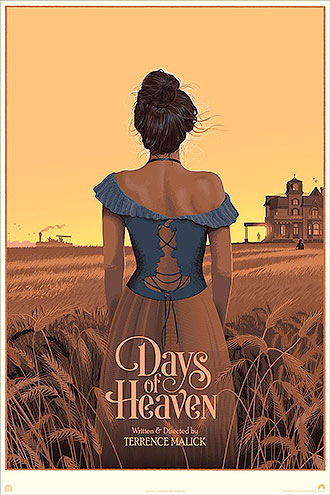
And information technology often was. In the predawn, the diffuse rays of sunlight would shine on the wheat fields and the bounce lite gave the faces of the actors a heavenly glow. And after dusk, the yellows and oranges and reds of the sunset would fade and bluish wavelengths began to color the heaven, giving the action a moody or ominous tone. The amazing scene, in which the entire field is burned in a massive fire, extended well by nightfall and is at times lit just by the fire itself.
Days of Heaven was a triumph, critically and aesthetically, and Malick's preparation, patience, and faith was solidified into a mystical artistic procedure. Malick would not use a storyboard or traditional filmmaking techniques again. But it would be twenty years earlier Terrence Malick made another motion-picture show.
Postal service-production Discovery of Narrative in The Thin Crimson Line
Malick returned to movie theatre with the star-studded 1998 film, The Sparse Carmine Line, an anti-war World War II flick (adapted from the novel past James Jones) set effectually the battle of Guadalcanal. At this betoken, his two films, his strange hiatus from pic, and his increasingly reclusive behavior 3, had fabricated him a Hollywood legend and actors were lined up for the opportunity to work with him.
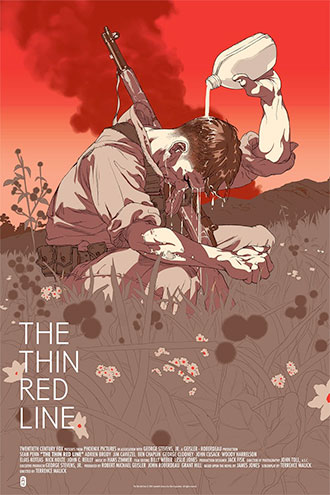
In the film, Malick cast Adrien Brody, who was to exist the atomic number 82 in the film alongside an ensemble cast that included George Clooney, Sean Penn, Nick Nolte, John Cusack, Ben Chaplin, Woody Harrelson, Elias Koteas, Jared Leto, Thomas Jane, Nuance Mihok, Jim Caviezel, Tim Blake Nelson, Nick Stahl, John Travolta, Paul Gleeson, Kirk Acevedo, and John C. Reilly. The product was nearly equally maverick and wild as the shooting of Francis Ford Coppola's Apocalypse Now. Malick had the actors attend a Boot Camp and camp in the wild without showering for a week at a time. The actors were given real M1s, made to dig their own trenches, and to slumber with their weapons. Although in that location was no storyboard, at that place was a script, which was extremely long and constantly beingness rewritten. Additionally, each thespian was given a package which might include hundreds of pages of ideas, photographs, histories, dialects, lists of books to read, films to come across, and music to listen to. Although the actors were prepared psychically, Malick did almost no actual rehearsal of scenes. Elias Koteas reports that when he asked Malick if they were ever going to rehearse, Malick said, "Elias, your whole life has prepared you for this moment." 4
Toward the terminate of production, Malick began shooting off-script with no schedule at all. Actors would study to set, exist made upwardly and wait to run into if their proper noun was called that 24-hour interval and if it was, they would improvise or interact with Melanesian locals. (The moving picture was shot nearly Port Douglas in Cairns.) Once, Jim Caviezel reports, "Terry says, 'Jim, go over and talk to that daughter.' And it's in the flick!"
Kirk Acevedo: "On any given day, any given hour, you didn't know what you lot were going to shoot. He'south very spontaneous. So, the lighting suited this moment, this scene; so that's what we're going to shoot …." Acevedo adds, "His direction is very poetic … catching for fairies and butterflies." five
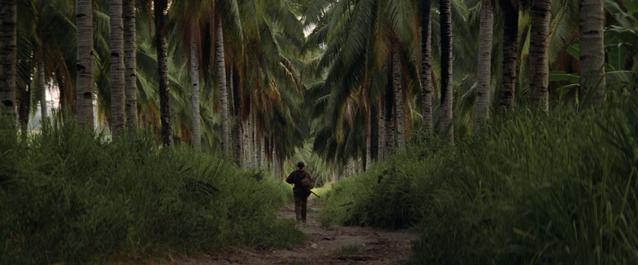
Malick's directorial style was certainly condign radical and experimental, but it was Malick's editing on The Thin Red Line that made his process revolutionary. Although Malick shares credit with three film editors on that film, he is himself, a easily-on editor and he oft takes a year to edit his films. While the script centered around Adrian Brody'due south character with George Clooney's character providing important support, Malick discovered in the cutting room that the story was actually more than about Jim Caviezel'southward character. This mail service-production discovery of narrative follows from Malick'southward newfound understanding that epitome is the first element of picture palace. As a visual fine art, it is not the story, merely the image that comes first. And since the epitome precedes the narrative, and given that the all-time images are unpredictable and capturing them is an act of faith, nosotros cannot know the story until we review the images.
The Thin Red Line was another critical success and was nominated for vii University Awards, including Best Moving-picture show and Best Cinematography (John Toll.) Malick was personally nominated for All-time Managing director and Best Adjusted Screenplay. But non anybody associated with the film was happy. Adrien Brody, who believed he was the star of the film and gave interviews to that effect, establish out at a printing junket a few minutes before the première that his part had been reduced to merely a couple of lines. Brody said,
I was so focused and professional, I gave everything to information technology, and and so to non receive everything…in terms of witnessing my own work. Information technology was extremely unpleasant considering I'd already begun the press for a pic that I wasn't really in. Terry patently changed the entire concept of the motion picture. I had never experienced annihilation like that…" 6
Bill Pullman, Lukas Haas, and Mickey Rourke, who said his acting in The Thin Red Line was "some of the all-time work I ever did" were cut completely from the flick and George Clooney'south role was whittled down to merely a few shots. seven Billy Bob Thornton's iii-hour narration of the film was also completely cut. Martin Sheen, Jason Patric, Gary Oldman, and Viggo Mortenson were also cast in the movie only their parts were cutting prior to principle photography.
Although Malick receives the highest admiration from some actors like Martin Sheen, who described him as, "a deeply spiritual, bright, clear homo who had a profound influence on me…" 8 and Elias Koteas, who distinguishes his life in two parts: life before meeting Terrence Malick and life afterward meeting Terrence Malick 9, many actors who worked with Malick began to experience betrayed, exploited, or cheated.
Radical Subjectivity in The New Globe and Tree of Life and Malick's Alleged Exploitation of Actors
The production of Malick's next project, The New World, a dream-like reimagining of the discovery of America past Europeans and their human relationship with the native population, was full of conflict with actors. Colin Ferrell and Christopher Plummer (who later vowed to never to work with Malick again) expressed swell frustration was his process (although Ferrell is warmer to Malick in later interviews.) The sets on The New World were built to allow 360 degree shooting. In a traditional picture shoot, in that location may exist dozens of cast and coiffure members just outside the scope of the shot, but with Malick'due south new improvisational mode, anyone and anything was fair game. In an interview, Christian Bale remembers a moment on set when Malick was shooting a scene that didn't involve his character, John Rolfe. Bale was continuing nether a tree smoking a piping when suddenly the camera was aimed at him. So he improvised and that footage is in the film. 10
Farrell and Plummer's frustration had to do with the fact that they were non able to contribute to the motion picture in the way in which they had agreed. Respected actors and beautiful plants and birds were every bit important to Malick's camera. Plummer reports:
"Colin Farrell kept maxim, 'My character, he's a fuckin' osprey. That's how he sees me.' You'd exist playing a passionate scene, and he'd say in that strange southern vocalism of his, mixed with Harvard and Oxford, 'Ah, jes' stop a minute, Chris. I retrieve there's an osprey flying over there. Do you listen if I merely take a few shots?' I wrote him an infuriated letter because I saw the film and I was hardly in it—he cut my part to shit." xi
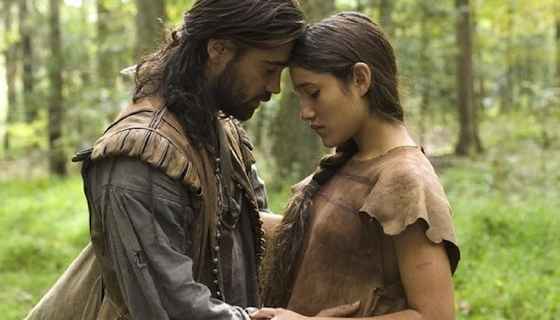
The New World is an exquisite looking film and cinematographer, Emmanuel Lubezki (Malick's fourth cinematographer through four films), was nominated for an Academy Award, just the picture received only a express release in the Us to mixed reviews.
Malick's next film, 2001's The Tree of Life, is the well-nigh ambitious project of his career. The moving-picture show is part family drama, office existentialist response to Dostoevsky, part autobiography. The film comes the closest of Malick's films to providing a philosophical statement although the premises are somewhat obscure. It likewise contains two of the near extraordinary sequences in his oeuvre. In fact, the beginning of these, a fifteen minute history of the universe and the Earth beginning with the Large Bang and extending through the development of life and the age of dinosaurs, is one of the about startling and breathtaking sequences in all of picture palace.
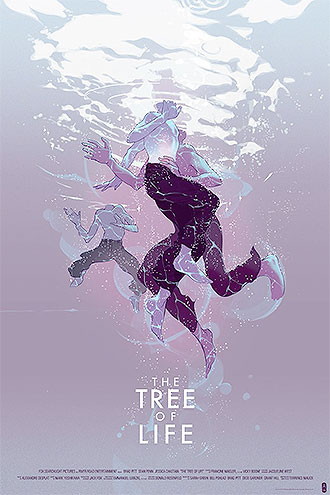
The film, his last to utilize a script (or at least a script that he would share with his actors), finds the O'Brien family (overbearing begetter played by Brad Pitt, grieving mother played by Jessica Chastain, and three sons), living in 1950s Texas after the startling news of the death of 1 of the sons; and information technology follows one of those sons, Jack (Sean Penn), in the early 21st century as he attempts to cope with success and breach. 12(Malick himself came of historic period in the 1950s in Oklahoma and Texas and lost his brother at a young age like Jack.)
Early in the moving picture, a distinction is made between "the way of nature", the dog-eat-dog view of the world and "the way of grace", the empathetic and spiritual manner of life. Simply we encounter in the film that suffering comes every bit to both the followers of the style of the nature and the way of grace, so the question is posed, why should we choose the style of grace? Why should we exercise compassion or religiousness in a cold, indifferent, cool world? Malick presents united states with a kind of theodicy, a religious response. Malick'due south answer seems to come up near the terminate of the moving-picture show when Jessica Chastain'south character says, "The only way to be happy is to love. Unless y'all honey, your life volition flash by. Benefit to them. Wonder. Hope." Merely the film doesn't stop hither. The picture show rejoins 21st century Jack every bit he surrenders to the manner of grace and joyfully wonders effectually his familiar world, seeing things every bit if for the first time.
Although we go a conclusion of sorts, I stop curt of dubbing this a philosophical statement for ii reasons: Showtime, the bounds in this statement are elusive and information technology is unclear whether Malick is prescribing the way of grace for everyone, for himself (since the film is very autobiographical), or for these item characters. Second, the film is poetic, both in narrative and in course. One of the reasons it was not generally well received by audiences is that it feels more than like a meditation or a personal prayer than a film (in the sense that well-nigh American audiences are used to.)
The Stories of Onetime, a film analysis YouTube aqueduct, expresses this idea well: "Malick doesn't merely want you to experience The Tree of Life intellectually, analyzing every frame for what he could take meant by it. He wants you to experience it emotionally …." Malick'south precedence of image over story insists that great art is capable of expressing more than words. The analysis continues: "He fully utilizes the medium of film – meaning that in that location really is no distinction between the story and the way the story is filmed. What this implies is that every prototype, every piece of music, however random it may seem, serves a purpose to the narrative." 13
The first great sequence in The Tree of Life, comes twenty one minutes into the movie as Jessica Chastain's grapheme is questioning the Divine and the relationship between humanity and the Divine. Then, Malick cuts to an extraordinary cosmological sequence beginning with a gentle calorie-free, then the Big Blindside and the expansion of the universe, and finally the development of life on Earth, from unmarried cell organisms in h2o through dinosaurs. This sequence begins with grace merely primarily hither, we witness the shocking and tearing mode of nature.
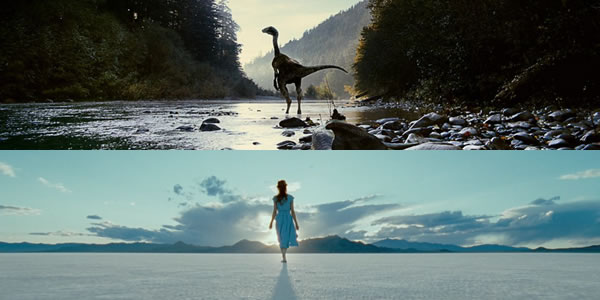
Malick'southward second revolutionary sequence is shorter and not nearly as spectacular, but it is noteworthy. We begin with Sean Penn's character, Jack, reflecting on his family, his birth, and childhood. Nosotros meet, presumably through Jack's imagination, the warm and romantic beginnings of his parents' matrimony. We run across his mother's pregnant belly, her screams of labor, Jack's own tiny feet in his male parent'south hands. We then shift to babe Jack'southward POV. Although Malick's camera alternates betwixt first person POV, over the shoulder POV, and non-POV shots, nosotros experience a radically subjective, phenomenalistic view of babyhood. Not only do we see the world through the eyes of a kid, we run into the globe through the eyes of this kid, Jack, a grapheme that nosotros have met but may not really like or sympathize with yet.
Malick is not the beginning or simply director to use get-go-person POV. Hitchcock did it famously in films like Vertigo to show a graphic symbol'south distress. Filmmaker Gaspar Noe uses it almost exclusively in his 2009 psychedelic film about death, Enter the Void. But Malick's utilize of camera as graphic symbol is unique. Malick (and Lubezski) use innovative wide-angle close-ups and forced perspective to distort images, recalling hauntingly our ain overwhelming view of the globe every bit children. And as we see more than of Jack'due south family unit and childhood from his unique perspective, nosotros are emotionally fatigued in. Malick effectively uses this technique to help us feel empathy.
The Tree of Life was hailed by critics and received University Award nominations for Best Motion picture, Best Director, and Best Cinematographer, only audiences generally plant information technology confounding. 14
Malick's Experimental Trilogy: To the Wonder, Knight of Cups, and Song to Song
To the Wonder, the first motion-picture show in Malick's so-called experimental trilogy, is an odd movie indeed and audiences did non respond favorably to it. Even many critics slammed the film. The Long Take, an net flick analysis channel reports that To the Wonder is "mostly considered to exist to be his worst film." The analysis continues:
For the bulk of American moviegoers, accustomed to the traditional storytelling structures and hallmarks of pop entertainment, Malick frustrates those expectations to an infuriating degree. The further he has progressed in his career, the more he has abandoned the requisites of skilful storytelling. Anything resembling a 3 human action structure, a clear narrative, and a character arc looks increasingly similar a vestigial trait on an evolving organism.
Although I don't agree with this commentator regarding a lack of graphic symbol arc, Malick certainly frustrates audition expectations. For instance, audiences (probably with some justification) causeless that this picture show ready in Oklahoma, starring Ben Affleck and Rachel McAdams, would be in English. The fact that the flick is almost entirely in French and some Spanish, spoken by Javier Bardem, with only a little groundwork dialogue in English, came as a surprise even to this Terrence Malick fan.
But To the Wonder, a tribute to love and to the strange and beautiful world inhabited by human beings, is an amazing picture show. The movie is narrated primarily by a French woman, portrayed past Olga Kurylenko, and nosotros see the world, especially the American southwest through her optics. We meet America, in all its glory and ugliness, every bit a greenhorn, an alien, a stranger.
It's unclear whether Malick intended to brand this item sort of pic when shooting. In an interview with CNN, Kurylenko acknowledges that there may have been some sort of script, but if and so, it was not shown to her: "The script wasn't nowadays or available to us. I only heard the story from Terry." She continues, "The scenes … he would tell u.s.a. [at] the last infinitesimal considering he didn't want us to overthink it, to rehearse, so he likes the spontaneity; he likes the mistakes to happen; he likes the real thing." 15 Christian Bale, who starred both in The New World and Knight of Cups, echoes this idea, proverb that Malick'due south philosophy on acting is "Permit'southward start earlier nosotros're fix." sixteen
Javier Bardem, who plays Begetter Quintana, a priest in spiritual crisis, says, "I don't know [who] Marina is in the moving-picture show because I don't accept the script. I don't know how their human relationship is . . .. No ane tells me. Not even the manager. And then, the relationship I have with Marina, Olga's grapheme, or Ben's, is what I see and what I hear." 17
In one case over again, it's clear that the picture show took shape in editing. Kurylenko says that Malick "doesn't film just the story he's going to make. He films the whole palette. He will do his painting in the cutting room. He doesn't paint while he films. He only gets the colors." xviii
And one time once more, this post-production discovery of the film came at a loftier cost to many of its contributors as actors Michael Sheen, Rachel Weisz, Drupe Pepper, Amanda Peet, and Jessica Chastain all had their parts excised completely from the finished film. But To the Wonder also invites some other, more serious charge of exploitation. Similar in The Thin Red Line, where Malick employs a large number of Melanesian extras, To the Wonder makes employ of many non-actors, locals from the town of Bartlesville, Oklahoma, where the film was (mostly) ready and shot. Many of these extras are disfigured, seriously ill, seriously impoverished, or incarcerated, their bodies ravished by obesity, disease, or drug habit, and many of their scenes are sad or agonizing. Although similar Diane Arbus before him, Malick (and in fact, much of the cast and crew, including Javier Bardem) spent time with and forged relationships with these local extras, the scenes may have represented them in an unflattering way that they did not understand when they agreed to be filmed. (Certainly most of united states of america would look unflattering juxtaposed against the likes of Ben Affleck and Rachel McAdams.) I don't believe it is Malick's intention to exploit the actors or non-actors he employs in his films. Rather, it is a natural result of his process that his camera views them all as living props, no more than or less important to the finished fine art than the birds or rocks or copse or waters that he films. Malick is non collaborating with his actors. He is using them in service of his collaboration with God.
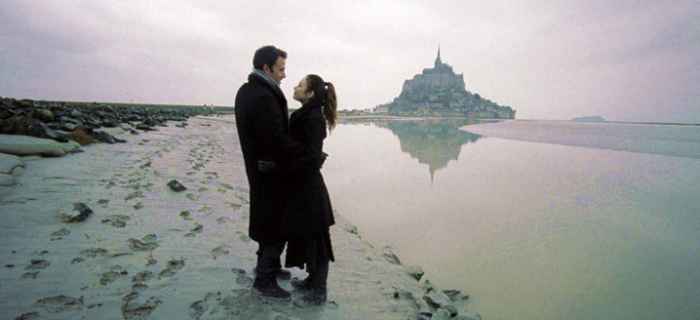
In the end, To the Wonder, was a commercial failure and furthered Malick'southward reputation as an avant garde arthouse director, too out of touch with mainstream audiences to connect on either an intellectual or an artistic level.
The final step (or final pace thus far) in Malick's filmmaking journeying came with 2015'southward Knight of Cups and 2017'south Song to Song. Knight of Cups had no script and only a loose narrative, inspired by "The Hymn of the Pearl", a story from the apocryphal Acts of Thomas. In this film, Malick revisits many of the themes from his past films, such as loss, grief, actuality, and purpose. To this familiar listing, Knight of Cups also adds temptation and excess as Malick comments on the beautiful, shallow, seductive characters of Hollywood and Los Angeles. Malick likewise advances his spontaneity, improvisation, and use of camera equally grapheme. Natalie Portman says in an interview, the camera was another character: "You feel like the camera is a person in the scene, another character, which it is" 19. But with Knight of Cups, Malick's organized religion in finding the film went even further. He collected a corking amount of B-whorl footage via random drone shots. He even went every bit far equally equipping Christian Bale with a GoPro camera and asking him to bulldoze around the city or walk effectually the beach without Malick or the any of the crew present. The picture, though full of dazzling images, was generally a disappointment to audiences, critics, and Terrence Malick fans alike.
Malick's most recent picture show, Song to Song, continued this experimental process. The motion picture, which is function relationship drama, role live music event, is set up in and around Austin'due south SXSW music festival and stars Ryan Gosling, Natalie Portman, Rooney Mara, Michael Fassbender, Cate Blanchett, and Holly Hunter alongside festival attendees and musical acts such as Patti Smith, Iggy Pop, John Lydon, and Blood-red Hot Chili Peppers. As with Knight of Cups, there is something like a narrative and certainly, there are well developed characters with some degree of a story arc, but the films wonders in and out of the lives of these characters without providing much to hold onto. This all seems very deliberate as Rooney Mara's character, Faye, says, "We thought we could just roll and tumble, live from vocal to vocal, kiss to kiss." Song to Vocal was one time over again panned by critics and audiences akin, making Malick'due south experimental trilogy a commercial failure and perhaps also a critical one. Knight of Cups and Song to Song certainly advanced Malick's reputation as an incomprehensible artist. Critic Ben Mankiewicz said of Malick'southward recent films, "His movies make me experience dumb …. They make me feel like I'm not smart enough to empathize it." 20 Past his ain access, Mankiewicz is not a critic who prizes visual artistry above story. But neither practice most patrons of movie theatre.
Malick's filmmaking career is characterized by a serial of artistic leaps of faith. In Badlands and Days of Heaven, Malick discovers and develops magic hour cinematography, not e'er knowing what he will go; only assertive that it will exist spectacular. With The Sparse Red Line, The New Earth, and The Tree of Life, he abandons traditional filmmaking techniques, like storyboarding and rehearsing. Instead, he prepares actors psychically and employs a radically subjective perspective. And in his about recent trilogy, To the Wonder, Knight of Cups, and Song to Song, he abandons script altogether, having organized religion that through patience, grooming, and editing the flick will emerge, led by the ontologically commencement element of movie, the image. Through these acts of religion, through his collaboration with the Divine, Terrence Malick has contributed cute films and revolutionary innovations to the medium. In the end, I'm not sure if I tin say whether or non Malick's final leap of faith institute consummation. His experimental trilogy has not found favor with audiences or critics every bit works of cinema, but perhaps as a work of theology or a personal prayer shared with the earth, he has succeeded.
What do you think? Leave a annotate.
Receive our weekly newsletter:
Source: https://the-artifice.com/terrence-malick/
Postar um comentário for "Christopher Plummer Says Ill Never Work With Terrence Malick Again Heres Why!"